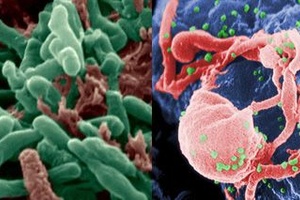Review: Tuberculosis and HIV co-infection
TB/HIV co-infection represents a novel pathogenic scenario at the global level. Our knowledge about the mechanisms of interaction of the two pathogens still has many gaps that need to be filled in order to develop preventive measures against the two diseases.
Abstract
Tuberculosis (TB) and HIV co-infections place an immense burden on health care systems and pose particular diagnostic and therapeutic challenges. Infection with HIV is the most powerful known risk factor predisposing for Mycobacterium tuberculosis infection and progression to active disease, which increases the risk of latent TB reactivation 20-fold. TB is also the most common cause of AIDS-related death. Thus, M. tuberculosis and HIV act in synergy, accelerating the decline of immunological functions and leading to subsequent death if untreated. The mechanisms behind the breakdown of the immune defense of the co-infected individual are not well known. The aim of this review is to highlight immunological events that may accelerate the development of one of the two diseases in the presence of the co-infecting organism. We also review possible animal models for studies of the interaction of the two pathogens, and describe gaps in knowledge and needs for future studies to develop preventive measures against the two diseases.


